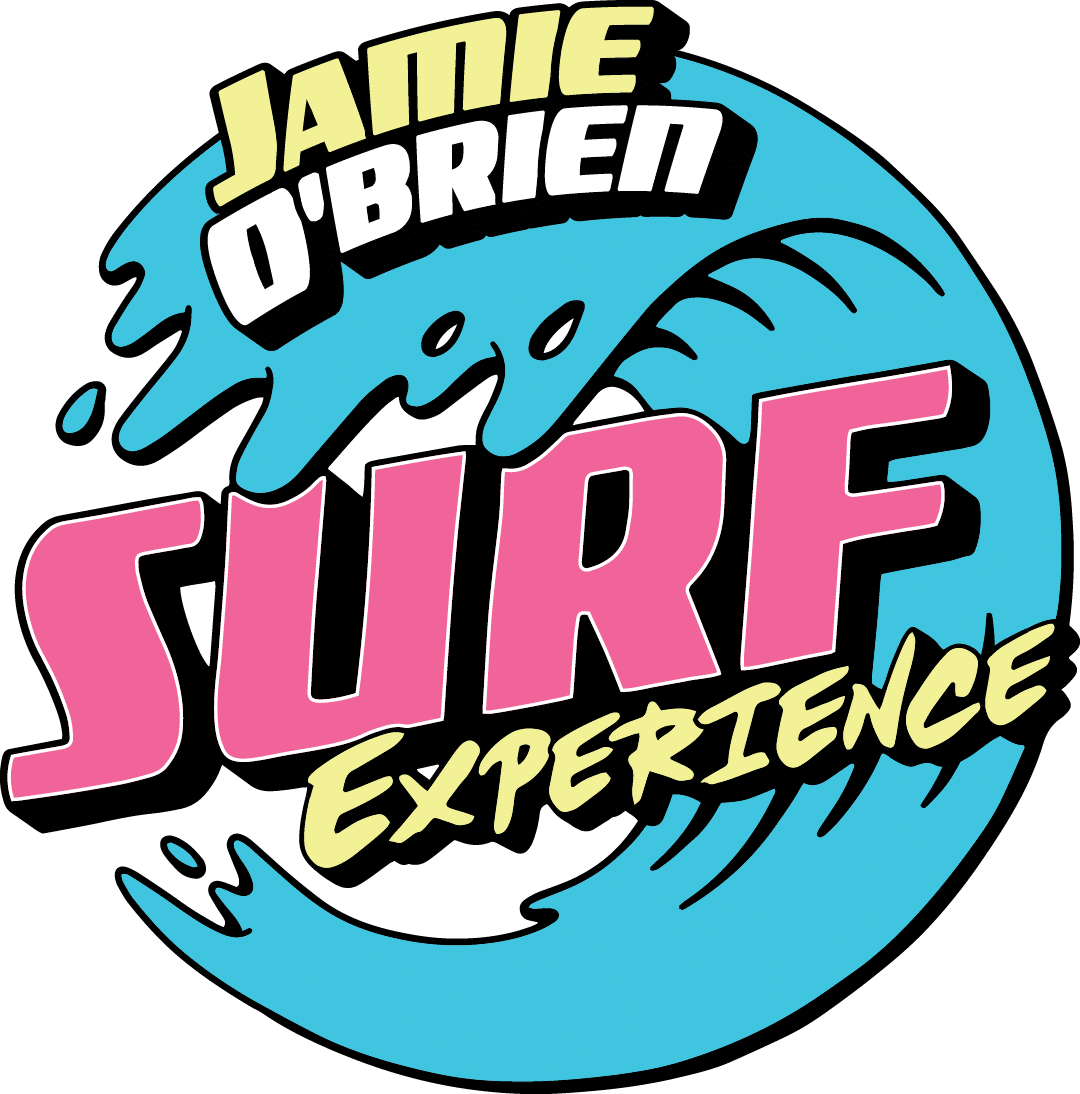As we’ve discussed at length, there are many types of surfboards surfers use in different conditions. In small waves, surfers choose to ride longboards or high-volume shortboards/ fishes. The extra volume in both designs gives surfers added float and paddle power to get into weaker surf. In steep, more powerful waves, surfers ride high-performance shortboards that have refined rails, heavy rocker, and pointed noses, so they can turn in the pocket and take steep drops. While it may be clear to beginner and intermediate surfers which boards they should ride in which conditions, chances are they don’t know why their boards are good in those conditions. Every detail of the shape of a surfboard has a functional purpose. While most surfboards make great wall hangers, they’re more than just pieces of art. Surfboards are finely tuned through years of trial and error. Shapers learn from their own experiences in the water, surfer’s feedback, and other shapers. The results are high-functioning and high-performance boards that guarantee we have in the water. To find out why surfboards do what they do, continue reading below for The Anatomy of a Surfboard Explained
Surfboard Length
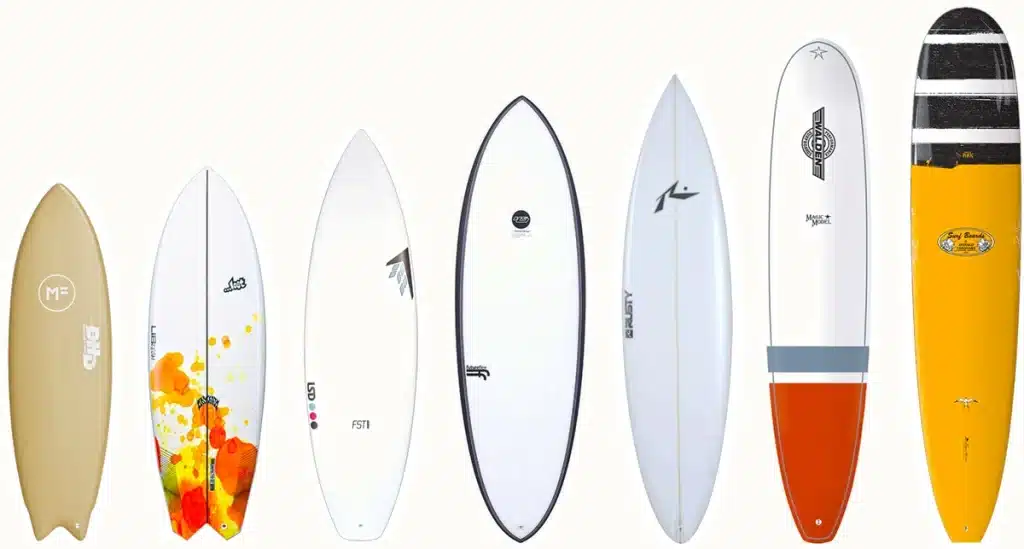
Board length is the measure of a surfboard from nose to tail in feet and inches. Length is one of the contributing factors to a board’s total volume and, therefore, affects how well the board floats, paddles, and catches waves. Generally, longer boards have more float, paddle power, and can catch waves more easily.
Surfboard Width
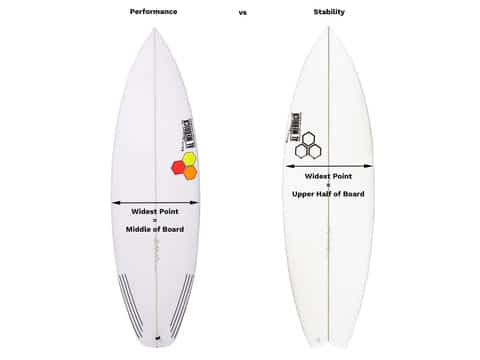
Width is another contributing factor to a board’s total volume. a surfboard’s width is measured strictly in inches, despite widths being well over 12 inches. The wider a board, the more float and paddle power it has. Other than longboards, fishes, mid-lengths, and grovelers also have a significant amount of width.
Surfboard Thickness
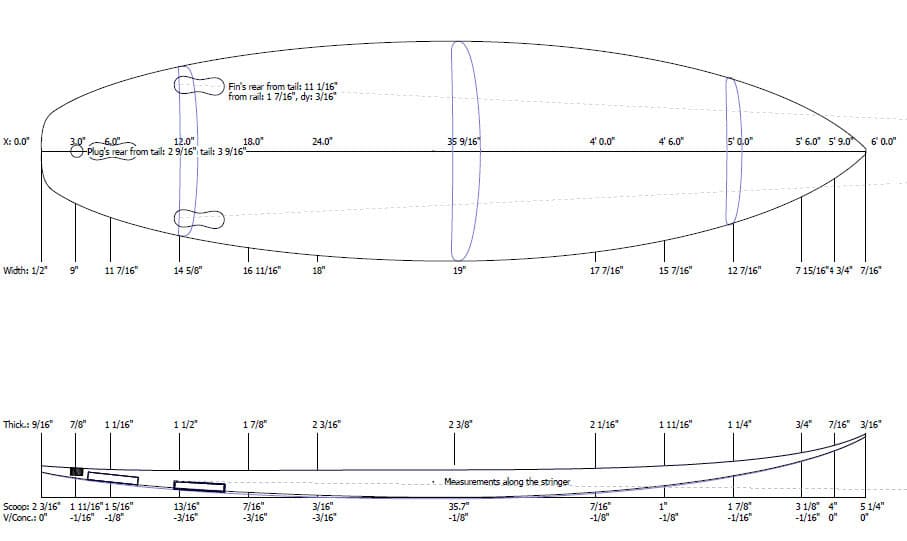
The next contributing factor to your surfboard’s volume is its thickness. The thickness listed on your board’s dimensions is measured from the thickest portion of the board and represents the length in inches of a board’s rail (the side).
Surfboard Foil
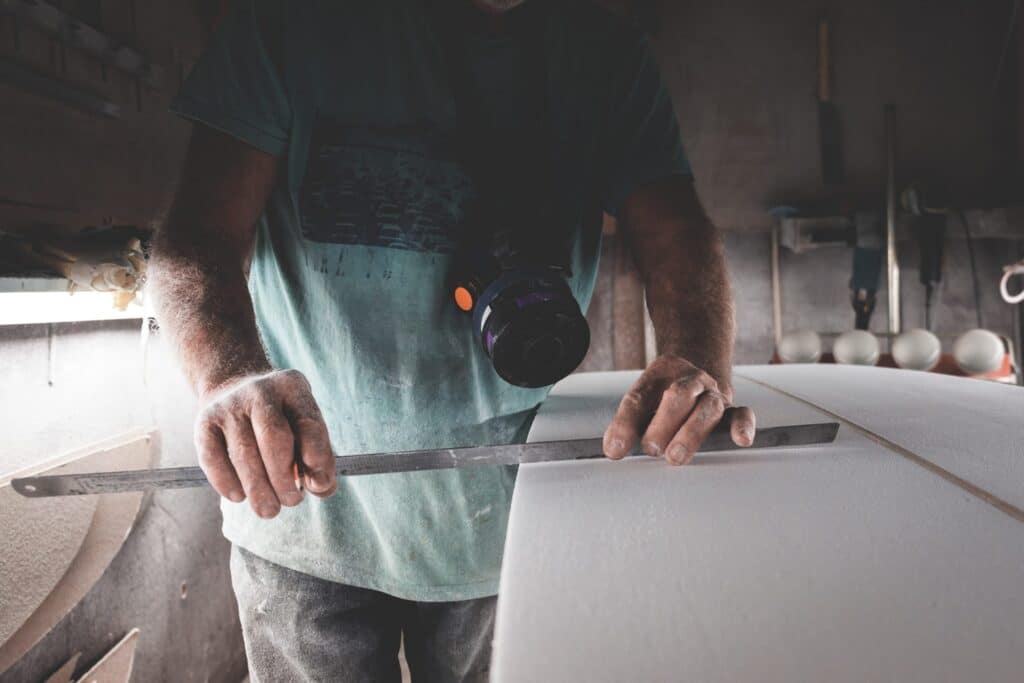
Because a board’s thickness is measured at the board’s thickest point, it is not an accurate indicator of the distribution of thickness throughout the board. Foil is a measurement of the board’s thickness as it tapers from nose to tail.
Surfboard Rocker

Rocker is the measurement of a board’s curvature. High-performance boards feature heavy rockers, meaning they are more curved so that they can match the curvature of a steep wave. Small wave boards have less rocker so that there is more planning area for the board to generate speed on a slower wave.
Surfboard Rails
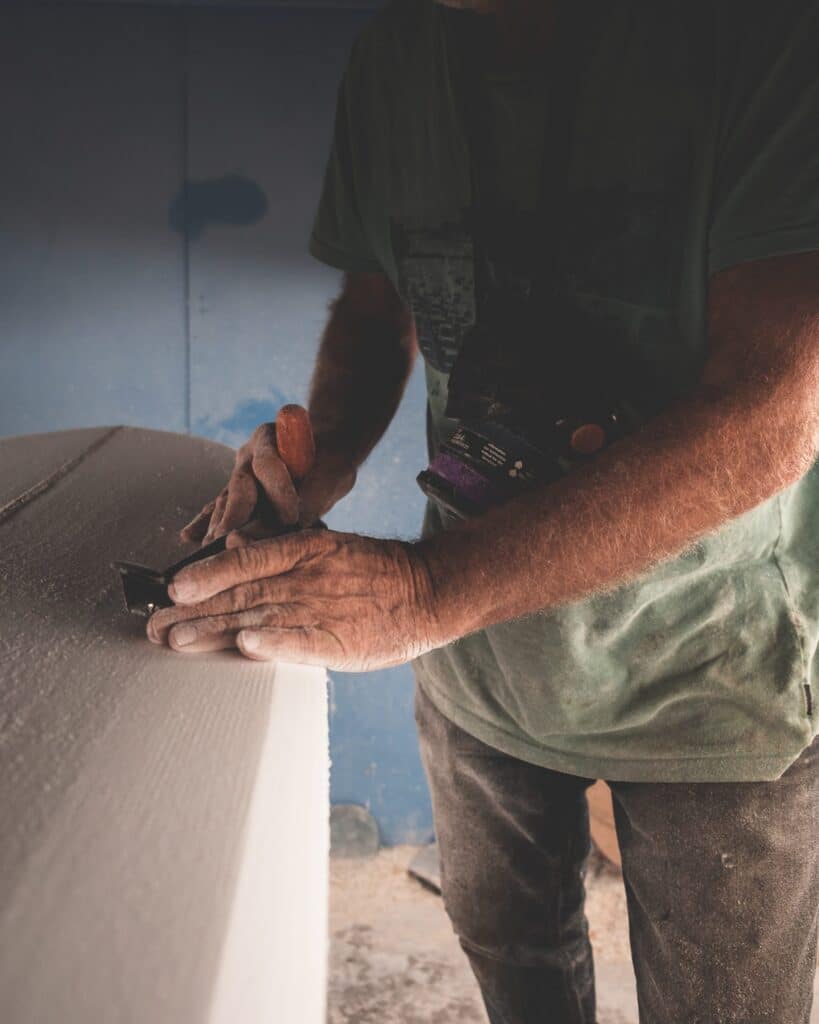
The rails are the sides of the board. They affect how the board cuts through the water and holds position on the face of the wave. Longboards, mid-lengths, and grovelers have what is known as 50-50 rails, meaning that the distribution of curvature is even on both sides of the rail. This gives the board ample hold and mobility. High-performance boards, on the other hand, have slightly downturned rails and have what’s known as 60-40 rails. This gives the board plenty of hold on a steep face.
Surfboard Nose Shape

Nose shape discrepancies can be felt on the drop more than anywhere else. A narrow nose is made to fit in tight pockets and take steep drops, while a wide nose has more planning area and volume for catching smaller waves. Shapers are modernizing their approach to nose shapes and are now able to pack volume into a narrow shape by adjusting the thickness and foil.
Surfboard Tail Shape
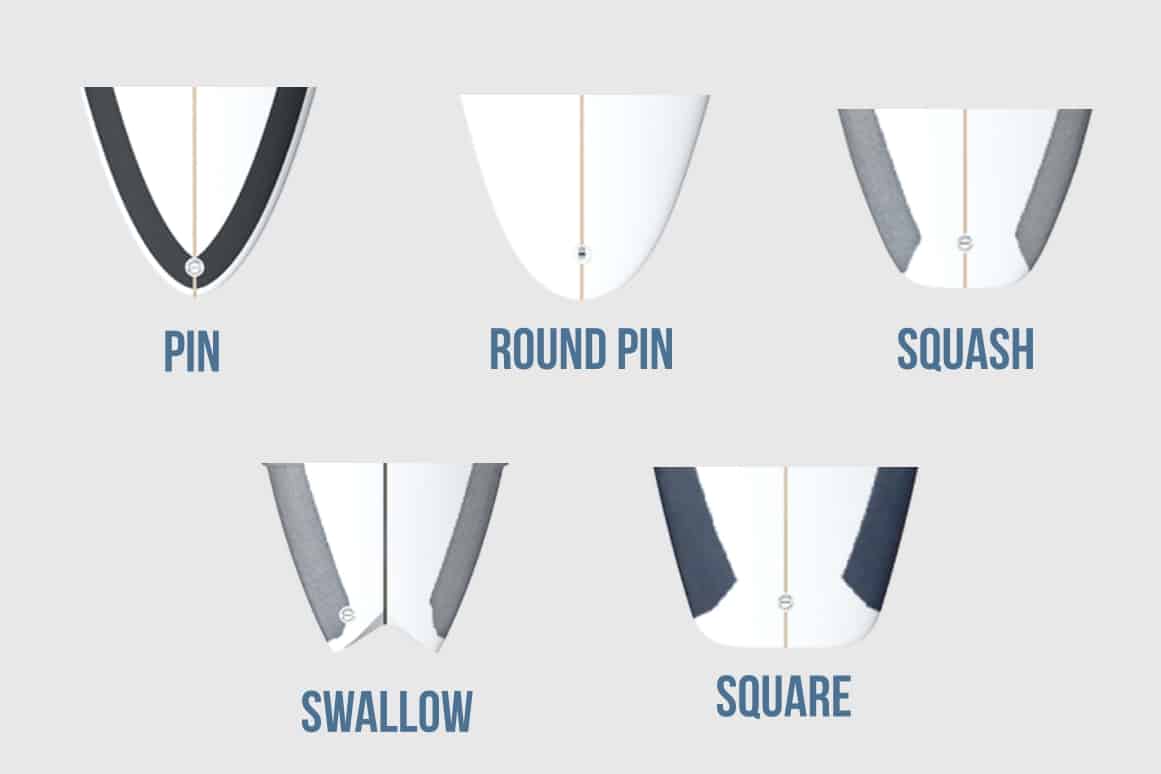
Tail Shape affects how a board catches waves, holds on the waves face, and releases through a turn. There are a variety of tail types, including swallowtails, squash tails, pintails, and more. There’s so much variety in tail design that it could be its own article since the tail effect almost every aspect of the ride, including how water is distributed through the fins.
Every surfboard is different. The details that go into each board are as complicated and intricate as any piece of art or architecture out there. Each board has a unique feeling that’s directly tied to the shaper’s original vision for the board and the execution of their design. To learn more about surfboards and surfing, stay tuned to our blog. If you’re planning an Oahu getaway, book your stay at the Turtle Bay Resorts, so you’re close to the action on the North Shore.
